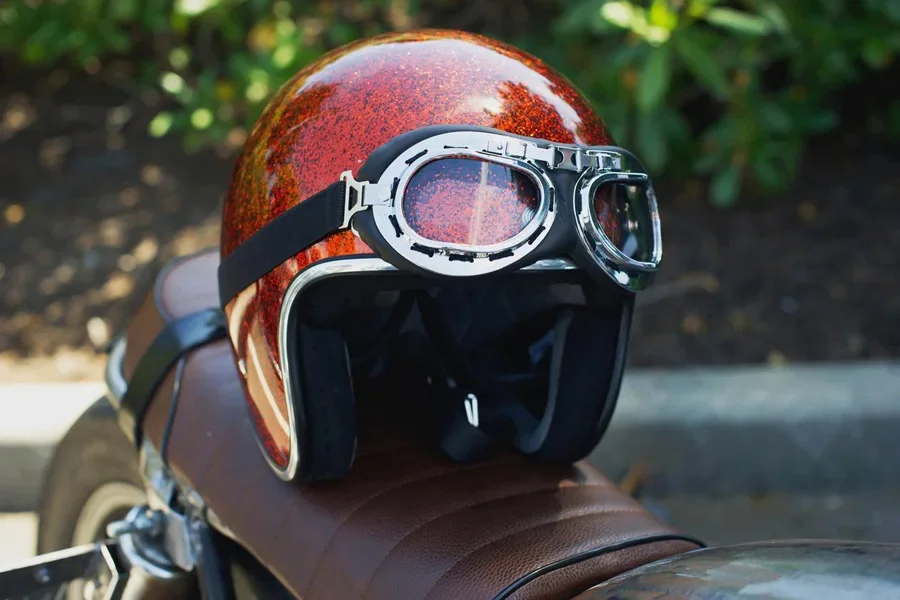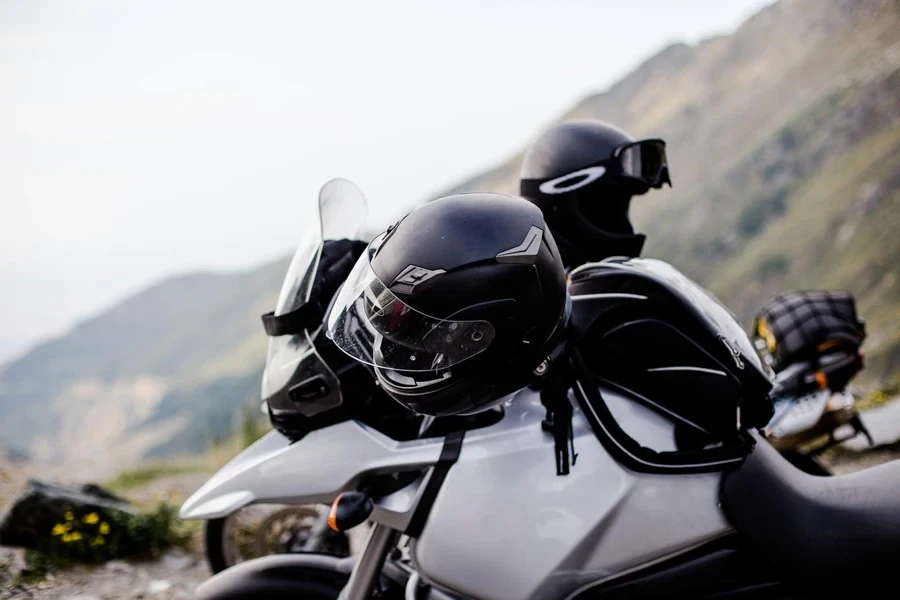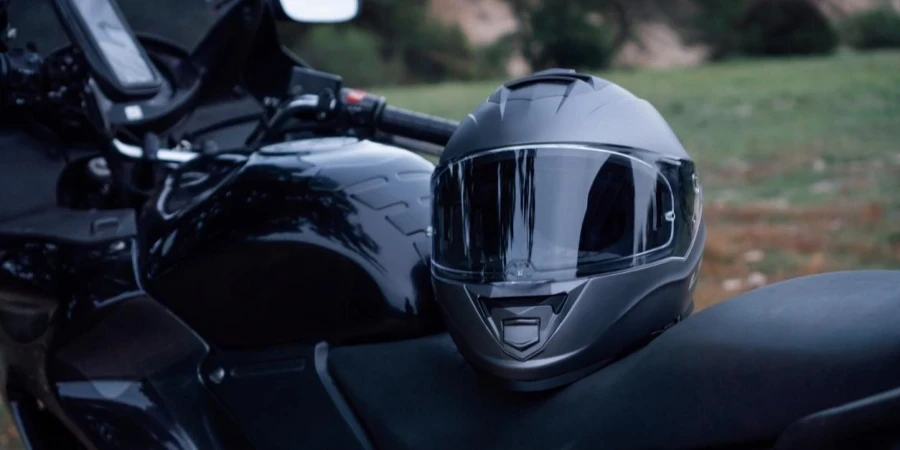Table of Contents
1. Introduction
2. Types of motorcycle goggles and their key uses
3. Insights into the motorcycle goggles market for 2024
4. Essential factors to consider when choosing motorcycle goggles
5. Top models and their standout features
6. Conclusion
Introduction
Motorcycle goggles are an essential piece of equipment, designed to protect riders’ eyes from wind, debris, and harmful UV rays while enhancing visibility in various riding conditions. In 2025, the focus on safety and comfort remains paramount as advanced technology continues to improve lens quality, impact resistance, and ventilation. High-quality goggles offer more than just protection; they also contribute to an enjoyable and stress-free ride by ensuring clear vision and preventing fogging. Riders must carefully select goggles that balance protection, adaptability, and comfort, especially when tackling long rides or harsh weather.

Types of motorcycle goggles and their key uses
Motorcycle goggles are crucial for rider safety and comfort, offering protection against wind, debris, and harmful UV rays. The right pair of goggles can enhance both visibility and overall riding experience, particularly in challenging conditions. The type of helmet and environment often dictate the most suitable goggles for each rider.
Open-faced helmet goggles
Open-faced helmet goggles provide extensive coverage, making them a popular choice for riders exposed to extreme conditions. These goggles are designed with larger frames to offer a wider field of vision while providing optimal protection from debris, dust, and wind. Riders who navigate harsh environments, such as off-road or dirt trails, prefer these goggles due to their high-impact resistance and enhanced protection. Models with advanced ventilation systems are especially valuable, as they help reduce fogging and maintain airflow during long rides.
Full-face helmet glasses
For riders using full-face helmets, lightweight glasses designed to fit seamlessly under the helmet are often ideal. These glasses are slimmer and more compact compared to goggles, offering protection while remaining comfortable for prolonged wear. Since full-face helmets include built-in face shields, the glasses primarily serve as an additional safeguard against minor wind and debris, while also improving vision clarity. This type of eyewear is a practical solution for riders focused on daily commutes or long-distance touring, where ease of use and comfort are essential.
Goggles with interchangeable lenses

Motorcycle goggles with interchangeable lenses offer exceptional versatility, allowing riders to switch lenses according to different light conditions. These goggles are especially useful for riders who experience varying environments, from bright sunny days to low-light or nighttime riding. Tinted or mirrored lenses are ideal for reducing glare in sunlight, while clear or yellow lenses are preferred for enhancing contrast during low-light rides. This flexibility makes interchangeable-lens goggles a smart choice for those seeking adaptable eyewear that can handle diverse weather and lighting scenarios.
Insights into the motorcycle goggles market for 2024
In 2024, the global motorcycle accessories market, which includes motorcycle goggles, is estimated to be valued at around USD 16.5 billion. Projections suggest it could grow to approximately USD 26.1 billion by 2032, with a compound annual growth rate (CAGR) of around 5% from 2024 to 2032. This market growth is driven by a rising focus on rider safety and the increased adoption of protective gear, including goggles with features like anti-fog coatings and impact-resistant lenses. As demand rises for high-quality safety gear, the market is benefiting from advanced protective features designed to enhance visibility and resilience, according to Grand View Research.
Market growth and trends
The motorcycle goggles market is set to expand in 2025, driven by a rising preference for multifunctional eyewear. Riders now expect goggles with advanced features like UV protection, impact resistance, and interchangeable lenses. Innovations in lens technology, such as photochromic and polarized lenses, are enhancing visibility in different lighting conditions. As outdoor sports become more popular, the demand for durable and stylish goggles is growing, pushing brands to innovate with added functionality and comfort.
Demand for impact-resistant and anti-fog lenses

The demand for impact-resistant and anti-fog motorcycle goggles is increasing as riders prioritize safety in challenging conditions. Polycarbonate lenses are becoming the industry standard for their ability to protect against debris and impact. Additionally, anti-fog coatings and improved ventilation are becoming essential features, especially for riders in harsh weather. These advancements ensure clear vision, making them ideal for both daily commuting and adventure sports. Manufacturers are responding by offering more models that meet these safety and performance needs.
Essential factors to consider when choosing motorcycle goggles
Lens protection and impact resistance
When choosing goggles, ensuring that they meet safety standards like ANSI Z87.1 is essential for impact resistance. Goggles with polycarbonate lenses provide excellent protection against flying debris, wind, and UV rays. Polycarbonate is the preferred material due to its shatterproof nature, which helps safeguard the rider’s eyes in case of accidents or extreme riding conditions.
Comfort and helmet compatibility
Comfort plays a crucial role, particularly for long rides. Goggles should fit snugly under helmets without causing discomfort, and features like adjustable straps help achieve a secure fit. Multi-layer foam padding around the frame can enhance comfort, ensuring the goggles sit well on the face without pressure points. Compatibility with different helmet types is also important, especially for those who wear full-face helmets.
Ventilation and anti-fog features

Ventilation is critical to prevent fogging, particularly in humid or cold weather. High-quality goggles often include built-in vents to allow airflow and reduce moisture buildup. Anti-fog coatings are also becoming common, ensuring clear visibility even in challenging conditions. This feature is especially important for off-road or adventure riders who encounter various weather extremes.
Lens color and adaptability
The right lens tint can significantly affect visibility in different light conditions. Yellow or amber lenses are recommended for low-light environments as they enhance contrast, while polarized lenses work best in bright sunlight by reducing glare. Some goggles also come with interchangeable lenses, allowing riders to switch depending on their surroundings, ensuring optimal vision throughout the ride.
Top models and their standout features
Everyday use: well-rounded options
For everyday rides, goggles that offer a snug fit and impact-resistant lenses are essential. These models are designed for both short commutes and long trips, providing consistent protection from wind, dust, and flying debris. Many everyday options feature lightweight frames, which reduce fatigue during extended use, while also incorporating UV protection for added comfort during daylight rides.
High-speed protection for open-face helmets
Motorcycle goggles designed for open-face helmets often prioritize lightweight construction and secure fit. These models typically come with padded cushions and adjustable straps, ensuring that they remain in place during high-speed rides. High-impact lenses are crucial for protecting the rider’s eyes from wind and debris, and the design often focuses on enhanced comfort without sacrificing safety. These goggles are particularly suited for riders who frequently travel at higher speeds or in windy conditions.
Extreme conditions: rugged durability

For riders tackling extreme environments, goggles designed with added durability are a must. These models feature interchangeable lenses, allowing for adaptability in various lighting conditions, such as day and night riding. Ventilation systems help prevent fogging, and magnetic or well-fitted eye cups ensure protection against wind and debris. Such goggles are ideal for adventure riders who face unpredictable weather and challenging terrains, offering optimal airflow and visibility in tough environments.
Off-road and dusty environments
Goggles built for off-road conditions focus on protection from dust, debris, and dirt. These models often include removable or magnetic eye cups for easy cleaning and maintenance. Their secure fit ensures they stay in place during rugged rides, while durable lenses protect against both impact and the elements. These goggles are highly recommended for riders who frequently face dusty trails or harsh environments, where maintaining clear vision is essential for safety.
Conclusion
Selecting the right motorcycle goggles in 2025 comes down to balancing key factors like protection, comfort, and adaptability. Riders should prioritize models that offer impact-resistant lenses and meet safety standards, ensuring proper protection against debris and harsh conditions. Features such as anti-fog coatings, ventilation, and interchangeable lenses help enhance visibility and comfort during diverse riding environments. As trends evolve, the focus remains on high-performance goggles that adapt to individual riding needs, whether for daily commutes or extreme adventures, making safety and comfort the top priorities for every rider.




